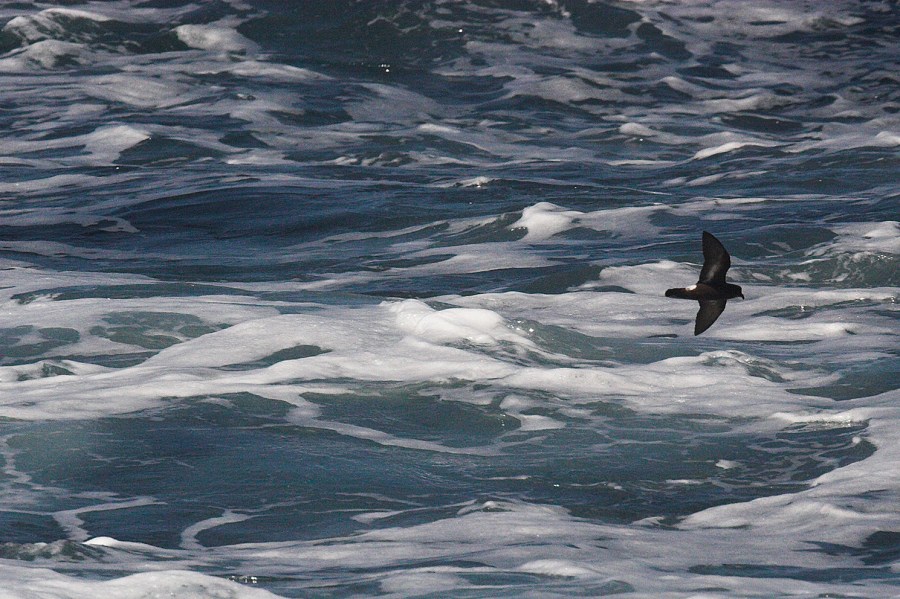How eliminating rats on the Isles of Scilly has brought back elusive nesting storm petrels. Words: Gabrielle Jaffe
For the first time in living memory, storm petrels have been recorded nesting in St Agnes and Gugh, the southernmost populated islands of the Isles of Scilly. It’s all because of a simple but effective decision to get rid of their main ground predators: rats.
These tiny seabirds breed only very rarely in England. The discovery of chicks on St Agnes and Gugh in early September has caused much excitement. ‘We were over the moon to hear [their] calls,’ says ecologist Vickie Heaney, who visited the nesting sites with other members of the
Isles of Scilly Seabird Recovery Project. After playing recordings of adult petrels, the team heard the responding gentle cheeps of chicks calling from within the rocky burrows.
Storm Petrel Chick Calling from Holly Brown on Vimeo.
Perhaps surprisingly, given their diminutive size (they’re about as big as sparrows), storm petrels spend most of their lives out at sea, buffeted by the winds. They are often spotted dangling their feet on the surface of the sea, giving them the appearance of walking on water – hence why they are named ‘petrel’, after St Peter. The ‘storm’ part of their name is a reference to their habit of hiding in lee of ships during stormy weather.
‘Rats prey on seabird eggs and chicks. Ridding islands of rats where they were never native is an easy way to help them,’ says Tony Whitehead of the RSPB. ‘What is really exciting is how quickly the seabirds have bounced back in this case. It’s almost instant.’
And it’s not just storm petrels that have benefitted from the removal of these predatory rodents. Manx shearwaters bred successfully for the first time in living memory last year on St Agnes and Gugh. The work will help guillemots and puffins too.
On Lundy, where rats were removed 10 years ago, puffin numbers have increased from 13 in 2000 to 80 in 2013 and shearwaters’ burrows have grown from 328 to 3,451 in the same period. Tony says, ‘It’s as simple as “remove the rats, get seabirds”.’
For more on the incredible wildlife living on the British Coast, see our nature stories. Don’t miss our feature on seeing birds by barge with the RSPB, in the November 2015 issue of coast
magazine.
How eliminating rats on the Isles of Scilly has brought back elusive nesting storm petrels. Words: Gabrielle Jaffe
For the first time in living memory, storm petrels have been recorded nesting in St Agnes and Gugh, the southernmost populated islands of the Isles of Scilly. It’s all because of a simple but effective decision to get rid of their main ground predators: rats.
These tiny seabirds breed only very rarely in England. The discovery of chicks on St Agnes and Gugh in early September has caused much excitement. ‘We were over the moon to hear [their] calls,’ says ecologist Vickie Heaney, who visited the nesting sites with other members of the
Isles of Scilly Seabird Recovery Project. After playing recordings of adult petrels, the team heard the responding gentle cheeps of chicks calling from within the rocky burrows.
Storm Petrel Chick Calling from Holly Brown on Vimeo.
Perhaps surprisingly, given their diminutive size (they’re about as big as sparrows), storm petrels spend most of their lives out at sea, buffeted by the winds. They are often spotted dangling their feet on the surface of the sea, giving them the appearance of walking on water – hence why they are named ‘petrel’, after St Peter. The ‘storm’ part of their name is a reference to their habit of hiding in lee of ships during stormy weather.
‘Rats prey on seabird eggs and chicks. Ridding islands of rats where they were never native is an easy way to help them,’ says Tony Whitehead of the RSPB. ‘What is really exciting is how quickly the seabirds have bounced back in this case. It’s almost instant.’
And it’s not just storm petrels that have benefitted from the removal of these predatory rodents. Manx shearwaters bred successfully for the first time in living memory last year on St Agnes and Gugh. The work will help guillemots and puffins too.
On Lundy, where rats were removed 10 years ago, puffin numbers have increased from 13 in 2000 to 80 in 2013 and shearwaters’ burrows have grown from 328 to 3,451 in the same period. Tony says, ‘It’s as simple as “remove the rats, get seabirds”.’
For more on the incredible wildlife living on the British Coast, see our nature stories. Don’t miss our feature on seeing birds by barge with the RSPB, in the November 2015 issue of coast
magazine.








